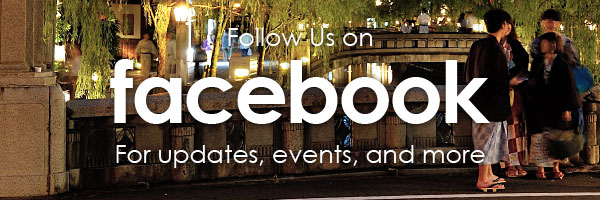
Unforgetable Ambience
Mystical Beginnings
Getting off the train at Kinosaki Onsen, you would be forgiven for thinking you'd been transported through time to historical Japan. This quaint little onsen town, located in the north of Hyogo prefecture is overflowing with the ambience of over 1300 years of history and has managed to keep its traditional aesthetic.
According to legend, Kinosaki Onsen was founded around 717 AD when the Buddhist priest Douchi Shonin received a vision from an oracle. The vision told him to pray for the health of the local people for 1000 days. After he did so, it is said a hot spring shot up from the ground, creating Kinosaki Onsen.
It is also said that the location for the oldest bathhouse Kouno-yu, was discovered when an Oriental White Stork (the symbol of the region) was seen bathing its’ wounds in the hot spring waters. These and other mythical tales add to the magic of Kinosaki Onsen.

Protecting Traditional Architecture
In 1925 the huge Tajima earthquake and subsequent fire devastated the area and burnt the whole of Kinosaki Onsen to the ground. When it came to rebuilding the town, the townspeople decided to keep the traditional architecture of the three story wooden ryokan instead of constructing large contemporary hotels. This is perhaps the main reason why Kinosaki Onsen seems quaint and quiet rather than built up and touristy. Strolling through the town along the willow lined river, you will cross over lantern lit stone bridges, in an undeniably romantic and cozy atmosphere.

Inspiring Artists

Kinosaki Onsen has always had a deep relationship with the arts. For centuries writers and painters have come here to find inspiration and relaxation. The most notable guest was perhaps the writer Naoya Shiga, who composed his famous short story ‘In Kinosaki' while staying here. The arts are still very much alive in the town, especially at Kinosaki International Arts Center with its active ‘Artist in Residence’ Program.
Breathtaking in Any Season

In whichever season you visit, there is something beautiful to discover. Autumn brings red leaves, winter brings fluffy white snows. In spring you can walk under clouds of soft pink cherry blossoms, and summer brings green willow trees and night time festivals. Kinosaki Onsen is truly a hidden treasure to be enjoyed at any time of year.
Hot Springs A Class Above the Rest

This town is built around the sacred natural hot springs, and without them the town would not be in existence today. The hot springs are what inspired and encouraged the people to rebuild after the town and their lives were destroyed by the great Tajima Earthquake. The bathhouses and hot springs were the first to be revived. There are 7 public bathhouses in total, all with in walking distance of Kinosaki Onsen Station and of each other. The larger bathhouses Satono-yu, Goshono-yu and Ichino-yu are spacious while the smaller ones of Jizou-yu, Yanagi-yu, Kouno-yu and Mandara-yu are popular with the locals.







Nestled in a valley, surrounded by mountains and sea, this hot spring town is filled with the tradition and culture of old Japan. Gazing at the classic architecture as you stroll along the willow and cherry blossom lined river, it’s easy to understand why Kinosaki attracts both Japanese and foreign visitors seeking to experience a piece of history and culture. The nostalgic ambience greets you the moment you arrive. The entire town feels like one large singular ryokan. The station is your entrance, the streets the hallways. The inns are your rooms and the hot springs your bath. Slip on your yukata and indulge in some total relaxation in one of the largest ryokan you will ever visit.